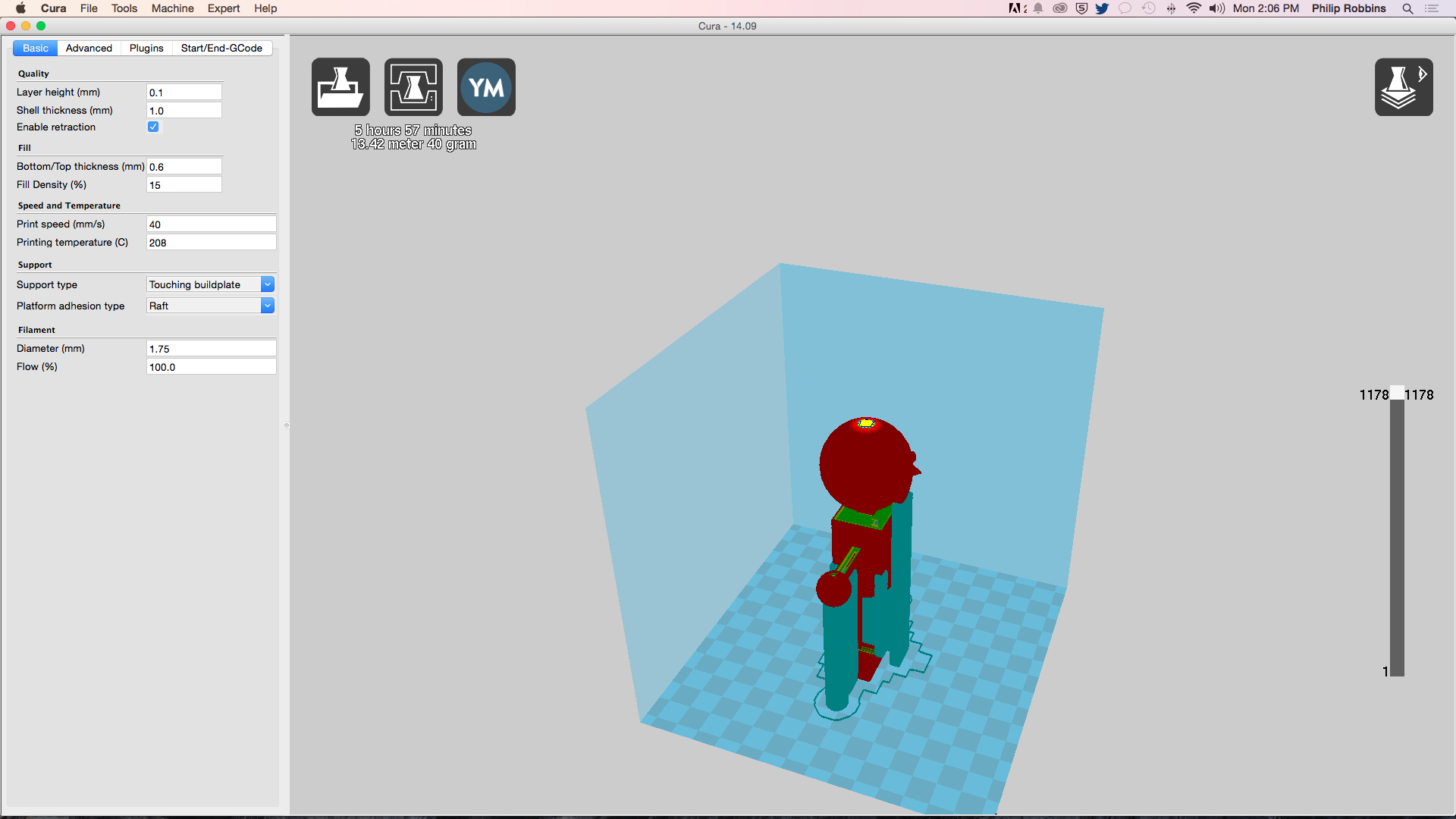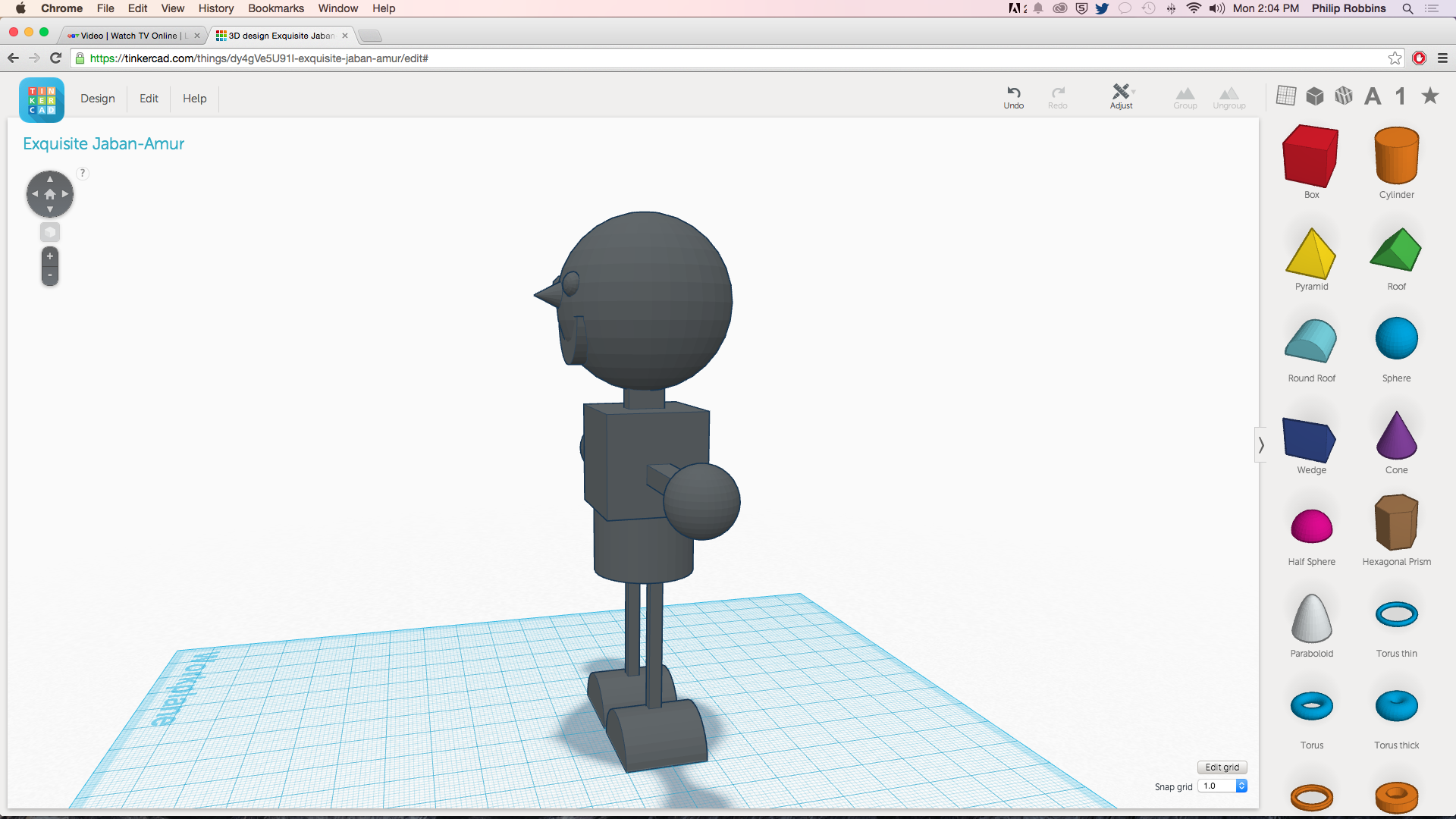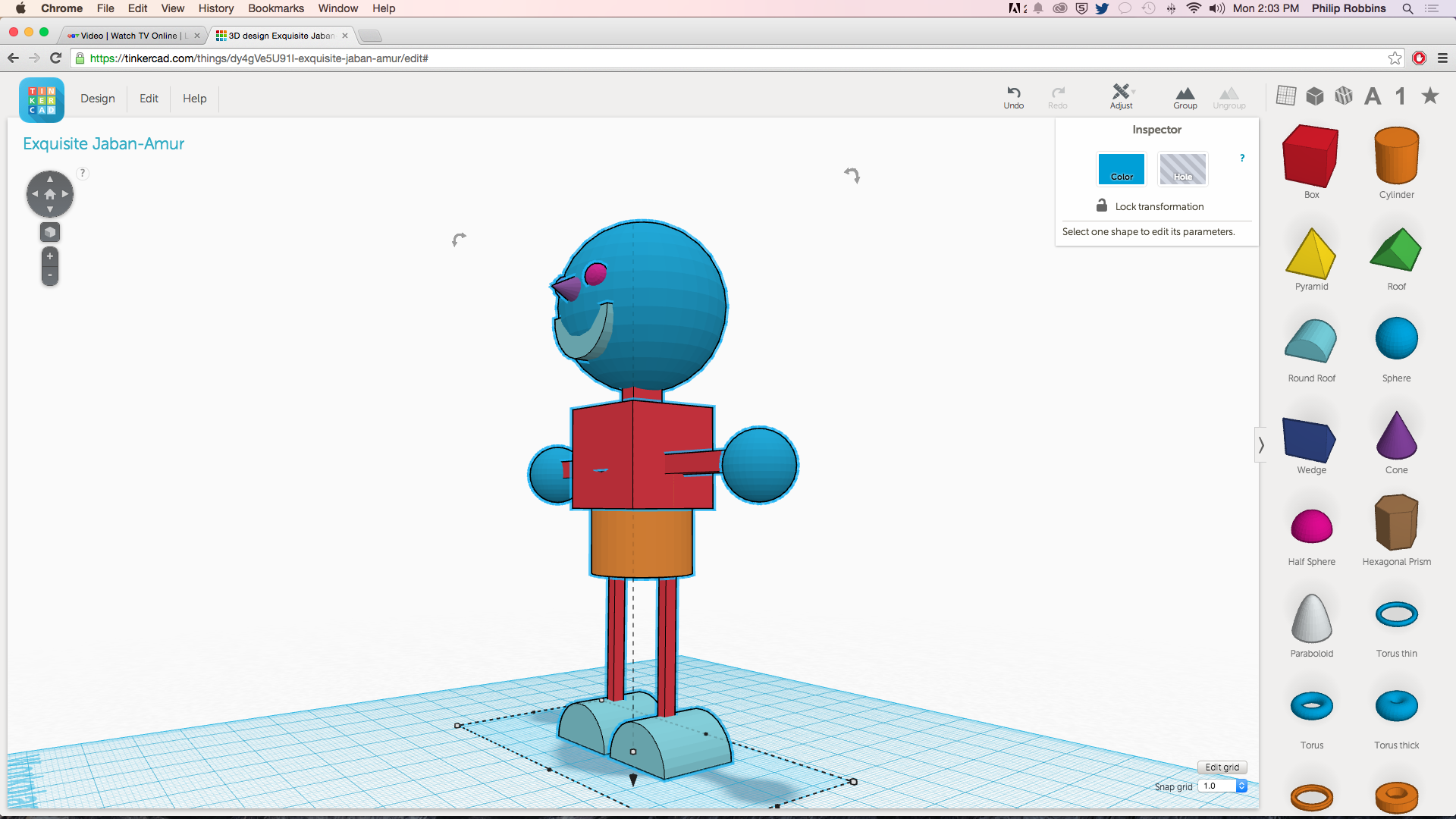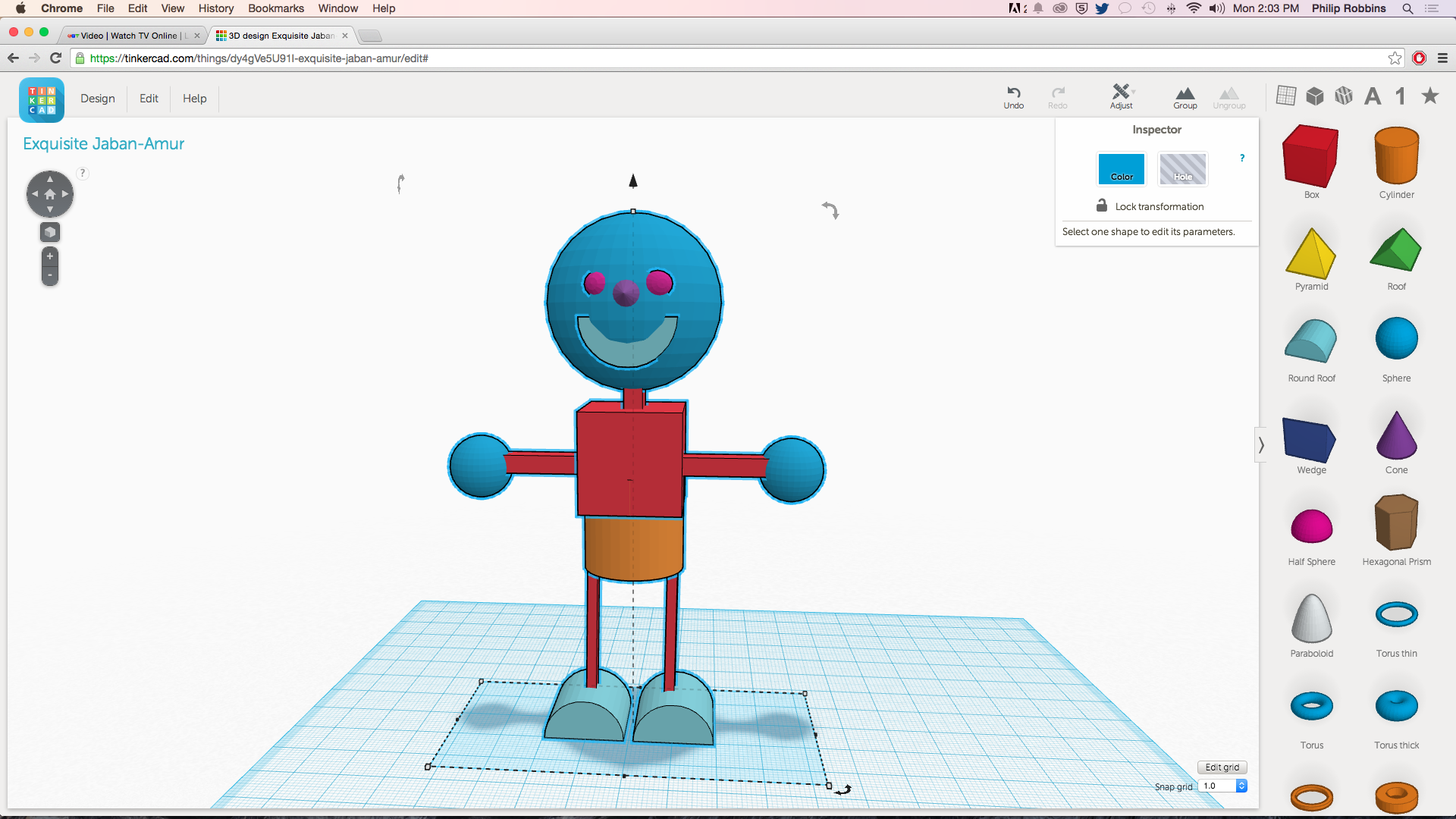Project 2: 3D Printing + Storytelling
Problem(s)
- How can you use a 3D printer authentically within a Visual Arts class?
- How can you teach authentic storytelling through the use of visual art?
Grade Levels
- Can be adjusted for youth (4 - 10), preteens (11-15), and teens (16-19) or skill level
Outcomes
Students will be expected to...
- Beginner
- Download existing 3D objects from Thingiverse, YouMagine, or another 3D repository
- Load that object into your chosen 3D printing software (ex. Cura)
- Scale and Print your chosen 3D object
- Write a short script, or a list of ideas, that you will use to tell a story using the 3D object that you have selected
- Using a digital camera (still or video) and software selected by your teacher create a short video/story using your 3D object
- Intermediate
- Develop a short script, or concept description, for your animation
- Using 3D CAD software design a simple character, creature, or object that you can use in your animation
- Export your character as a printable STL file
- If needed create a hidden armature or stand to help move your creature
- Using a digital camera (still or video) and software selected by your teacher create a short video/story using your 3D object
- Advanced
- Develop a short script, or concept description, for your animation
- Using 3D CAD software design a fully articulated (can be posed) character, creature, or object that you can use in your animation
- Or, print multiple versions of your character(s) in their various poses)
- Or, Using an Xbox 1414 Kinect/iPhone, Reconstructme/Skanect/123D Catch create your own 3D models of your face, objects, things, etc...
- Export your character(s) as a printable STL file
- If needed create a hidden armature or stand to help move your creature
- Using a digital camera (still or video) and software selected by your teacher create a short video/story using your 3D object
Rationale
The purpose of this lesson is to engage students in story telling and NOT simply to get the students using a 3D printer. So be sure to begin your lesson with examples of good/authentic story telling and to encourage students to consider their characters, the plot, etc, as they progress. You know your students ability level so be sure to make your goals and steps obtainable and follow-able.
Materials
- Foam Core (for workspace and backdrop)
- Play-dough/Plasticine/Other (for other characters or objects)
- Fishing Line, toothpicks, etc (for suspending or moving your characters)
- Digital Camera (a still camera is preferred)
- Scissors and other art supplies as needed
- 3D Printer (Any Make or Model)
- Owner's Manual or Introductory Website from the Manufacturer
- 1-2 kg PLA or ABS Filament - Any Colour (Most printers will use PLA)
- 3M Blue Painters' Tape
- Utility Knife
- Unscented Hairspray (Extra Hold)
Procedure / Steps to Completion
- Preparation
- Ensure that you have a tripod or device stand (example for iPad)
- Ensure you have good diffused lighting and foam core for a lighting table (cheap, medium, crazy talk)
- Make sure your camera, lights, computers, printers, and software all works the way you expect it to (in your classroom, not just at home)
- Have your links already bookmarked and ready to go
- Introduce story telling in your classroom in advance (Books, poems, short stories, oral stories from the region, films or movies, and short-films)
- Before Students Print
- Introduce the project to your students (using a film or video you have produced in advance will make a huge difference, but you can use things like Bear on Stairs, Chipotle's Viral Video, Unbox Yourself, or Boxtrolls
- During your introduction keep the focus on storytelling and NOT the technology involved - We want authentic stories and not tech-driven projects
- For younger kids either have objects printed in advance or have them pick 2-3 3D objects and then proceed to printing and allow them to generate a story as they go or write a script - choose according to their skill level
- For everyone else consider the characters, plot, and the additional props or things they will need to complete their video - make a list
- Develop a plan for 3D printing, sculpting, building or otherwise realizing these plans (ex. Print will students print one static character, many 3D characters in each pose, or a articulated character who can be posed)
- Students need to plan/decide their set, props, and determine your lighting needs (day, night, etc)
- Find, Model, Build, and Print
- (Beginner) Students can now find and print 1-3 existing items from an online 3D repository (see above)
- (Intermediate-Advanced) Students can now start modeling their character(s), props, and scenery items in CAD or 3D animation software (Students can use existing items if it serves your class time better)
- Once the character(s), scenery, props, set, and script have been completed students may begin to make their video (Presumably you will either demonstrate this process in advance or work it into your lesson)
- Export and Display
- Once the video is complete, edited, scored, and rendered you should share it online on Twitter, your classroom's website, or elsewhere within the school itself (Create an exhibition or showing) - Be sure to show or invite your students parents to see the final products
Photos
Click above for additional images
Materials
- 3D Printing (required)
- Animation
- Stop Motion Studio (iOS)
- Stop Motion Camera (iOS)
- Frame X (iOS)
- Stop Motion Cafe (iOS)
- 3D Modeling (optional)
- Editing
- iMovie
- Adobe Premier
- Gimp (Stills)
- Pixelmator (Stills)
- Sound
- Repairing Models (optional)
Safety
- Use 3D printers in a well ventilated area
- The 'Hot End' of the 3D printing head gets very hot, DO NOT TOUCH
- Use common knife and general safety procedures around a 3D printer
- PLA is biodegradable and is made of corn starch, but do not ingest
- Do not use a 3D printer without training or without advising a teacher/TA
Sample Questions
- Have you ever been told a story? When? By Whom?
- What makes a good story?
- What makes a good storyteller?
- Can you find examples of effective/good storytellers online?
- What is Plot? Narrative?
- What makes a good Hollywood movie or YouTube clip?
- How are Hollywood movies made?
- How do sound effects work? Should you add any to your film?
Resources and References
CityX Project (Using a dramatic framework)
Teaching storytelling (PDF)
What is Storyboarding? (Prezi with video links)
Note: Have as much fun as you can and try to deemphasize any technical issues and focus on the storytelling.





